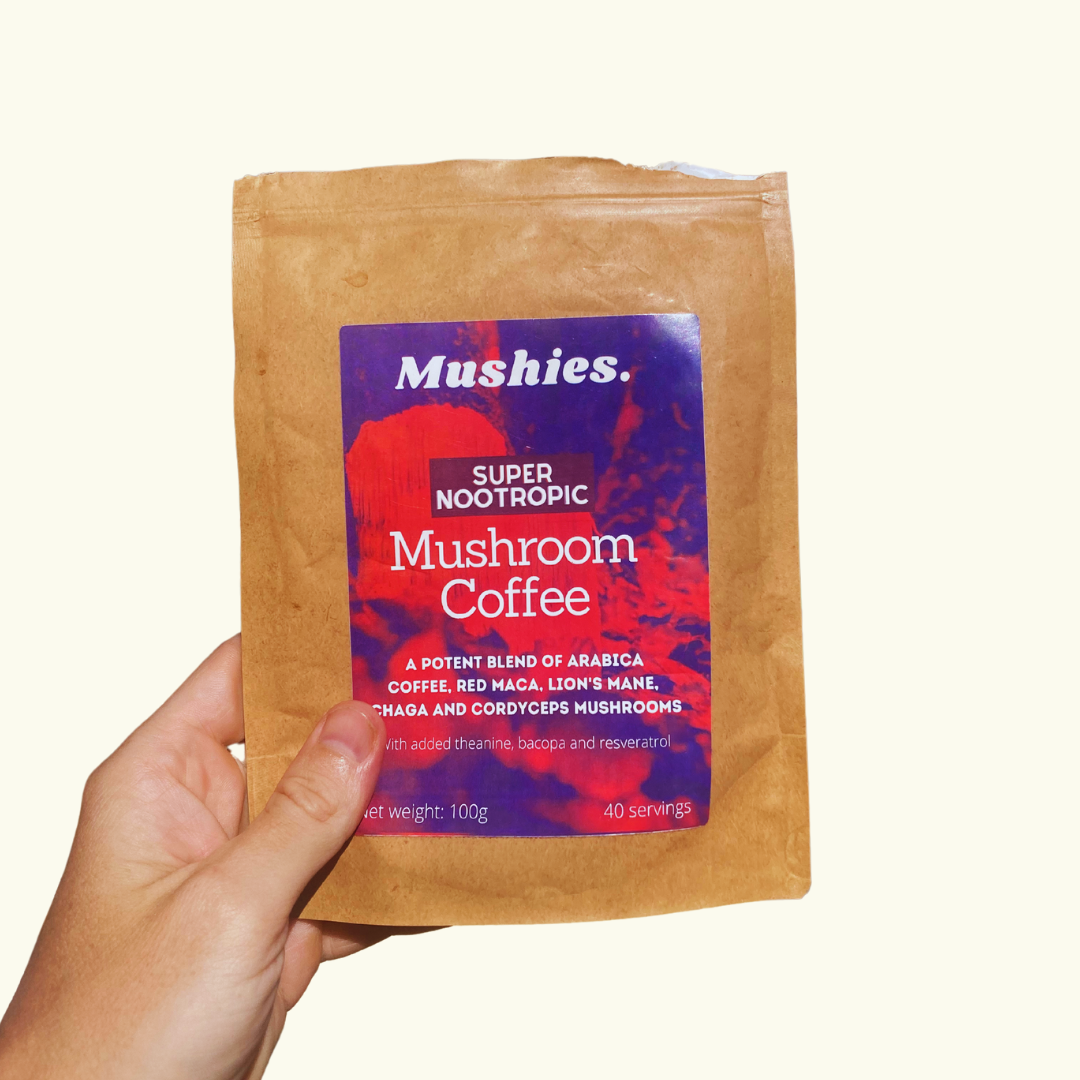Most people have now at least heard of lion's mane - the shaggy white mushroom that's celebrated for its effects on focus, memory, and mood.
But over the past few years, researchers have discovered that it doesn't just offer benefits for brain health. It may also help fight cancer.
Lion’s mane has been shown to slow the growth of cancer cells, trigger their self-destruction, and even re-educate them to behave like normal tissue again.
Here’s what the latest science shows.
Four Key Studies
1. 2015: The Discovery of a Protective Compound
Back in 2015, South Korean scientists led by Seoung Rak Lee discovered a new fatty compound in lion’s mane called cerebroside E [Lee et al., 2015; PMID 26547693].
What caught their attention was its dual action:
-
It protected kidney cells from the damaging effects of the chemotherapy drug cisplatin, which one of the most common and toxic cancer drugs.
-
It also blocked new blood vessels from forming around tumours, effectively cutting off their nutrient supply.
That one-two punch. By helping healthy cells survive while starving tumours, it hints that lion’s mane could be useful as a supportive therapy alongside conventional treatments.

2. 2022: A Two-Decade Review of Cancer Research
By 2022, the evidence had grown so much that researchers at the University of Auckland pulled together 20 years of global studies on Hericium erinaceus [Chen et al., 2022].
Their review found that lion’s mane’s unique compounds (erinacines, hericenones, and polysaccharides) showed anti-cancer activity across many types of tumours:
-
In stomach and liver cancers, extracts helped cancer cells self-destruct and made chemotherapy drugs work better.
-
In leukemia, they shut down growth-promoting genes.
-
In prostate and breast cancers, they slowed tumour growth and triggered natural cell-death pathways.
The evidence suggests that lion’s mane doesn’t attack cancer in one single way. It seems to hit several points at once: slowing growth, activating cell death, blocking blood supply, and supporting the immune system.
3. 2024: Cracking Chemoresistant Colon Cancer
Fast-forward to 2024, when Shui-Yi Tung and colleagues isolated a special form of erinacine S, another active compound from lion’s mane [Tung et al., 2024; PMCID PMC12595331].
They tested it on a particularly tough kind of colorectal cancer that had stopped responding to chemotherapy.
The results were impressive. The compound re-activated the cancer’s self-destruct system and rewrote gene expression in ways that made tumours vulnerable again.
In mice with human colon tumours, the treatment significantly reduced tumour size without harming healthy tissue.
Instead of acting like a blunt poison, this compound seemed to “reprogram” cancer at the genetic level, offering an exciting glimpse of how natural molecules might guide future therapies.

4. 2025: Teaching Cancer Cells to Mature
The most recent breakthrough came from researchers at the University of Pavia in Italy this year. [Brandalise et al., 2025]
They treated aggressive neuroblastoma cells (a childhood cancer of the nervous system) with a mix of lion’s mane extracts from both the mushroom’s fruiting body and its underground mycelium.
Over the course of a week, the cancer cells stopped dividing and started behaving like normal nerve cells. They even developed longer branches called neurites and began firing tiny electrical signals, just like healthy neurons.
In other words, the mushroom seemed to teach the cancer cells to mature, turning them from chaotic and dangerous into stable and well-behaved. This “differentiation” approach could one day complement existing treatments without the toxicity that comes with many cancer drugs.
The Common Mechanisms
-
Kills cancer cells directly (cytotoxicity)
-
Triggers apoptosis (programmed cell death)
-
Re-educates cancer cells via differentiation
-
Starves tumours by blocking angiogenesis
-
Boosts chemo efficacy while protecting healthy tissue
Rather than a single “magic bullet,” lion’s mane acts like a multi-compound orchestra, hitting cancer from several directions and making resistance harder to develop.
What Now?
Most data so far come from cell and animal studies; human trials are still needed. But the field is moving quickly.
Given its long culinary history and demonstrated safety, lion’s mane stands out as a uniquely safe candidate for integrative cancer research.
It's also promising due to the fact that lion’s mane appears to work very differently from modern cancer drugs like chemotherapy.
Rather than waging war on cancer, it seems to remind cells of their purpose. It turns chaos into order, leading diseased cells to mature, self-destruct, or simply stop dividing.
That shift from destruction to re-education is part of a bigger paradigm in healthcare - one where healing is carefully guided rather than forced.
So lion’s mane mushroom is proving to be far more than a brain supplement.
References (in-text):
-
Tung S-Y et al. (2024) PMC12595331 – “A Novel Erinacine S Derivative from Hericium erinaceus Overcomes Chemoresistance in Colorectal Cancer Cells.”
-
Lee S R et al. (2015) PMID 26547693 – “A New Cerebroside from the Fruiting Bodies of Hericium erinaceus and Its Applicability to Cancer Treatment.”
-
Chen Z et al. (2022) Food Science and Engineering 3(1): 69-90 – “Neuroprotective and Anticarcinogenic Properties of Hericium Mushrooms.”
- Hericium erinaceus extracts promote neuronal differentiation and excitability through nootropic metabolite activity"
⚠️ Disclaimer
This article summarises pre-clinical research and is not medical advice. Anyone considering complementary therapies should consult a qualified healthcare professional.






